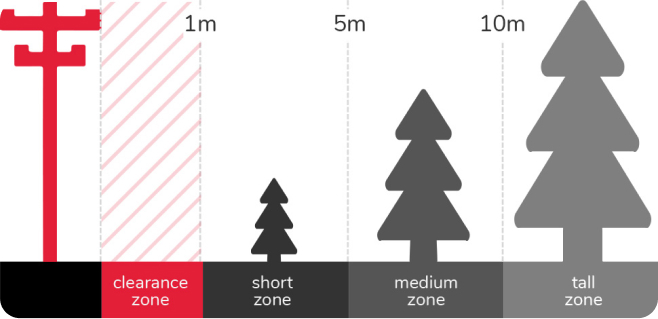Trees and power lines
Why tree maintenance matters
Trees are an important part of our city. Making sure they don’t contact wires is important to help avoid outages and injuries.
Trees and branches are good conductors, this means that they only need to come close to a wire for electricity to arc, or 'jump' and travel through them and cause a shock or a fire.

If your trees contact your service line, we recommend you call a trained arborist to trim your trees. To avoid problems from growth, plant new trees away from lines.

Tree Trimming Program
Our crews survey neighbourhoods on a three-year cycle to identify trees and branches that are too close to the wires that run from pole to pole in public areas such as parks or along roads and back lanes. We do this to keep our crews safe while working on the wires and to help avoid outages.

You will receive a notification

Who does the trimming
It’s a three-year trim
Tree planting guidelines
Choosing the correct location to plant your tree is a great first step to protecting the wires and electrical equipment around your home, avoiding outages and helping to keep you and your neighbours safe.
The closer trees or shrubs are to electrical poles and wires, the shorter and narrower they need to be. Trees that grow close to or over wires are a significant cause of damage and outages as well as posing a safety risk for you and your neighbours.
Local garden centres and tree farms can provide details on which trees would be a great choice for your yard.
Planting Distance Guide
If you’re planting a tree in a neighbourhood with overhead wires, use this guide to locate your tree safely.


Clearance zone: No trees or shrubs can be planted within one metre of the widest extension of electrical equipment.
Short zone (min. 1 metre from wires and poles)
Trees and shrubs up to two metres tall (e.g. hedges) can be planted in this zone.
Medium zone (min. 5 metres from wires and poles)
Tall zone (more than 10 metres from wires and poles)
Any height of tree is acceptable in this zone.

